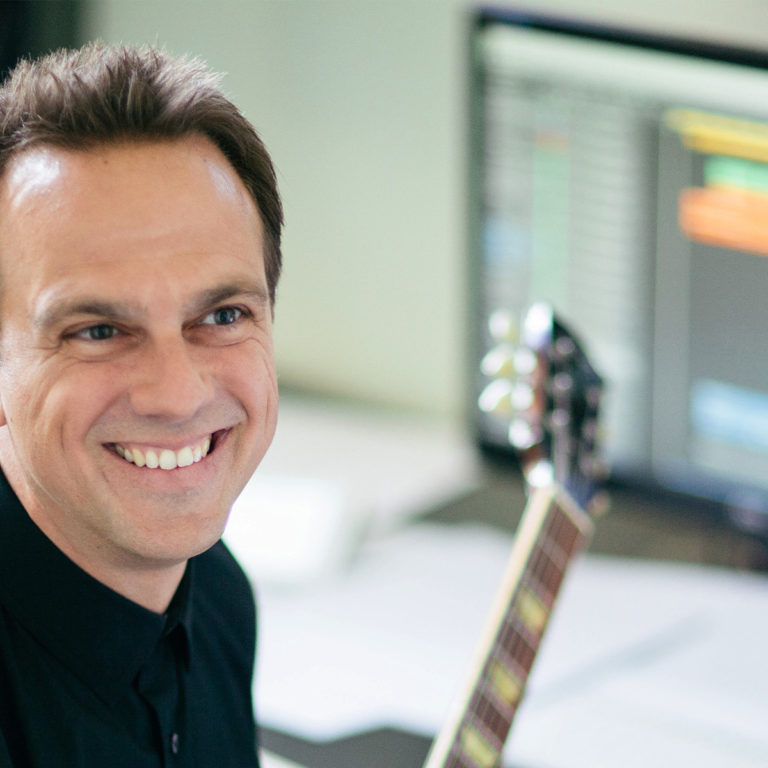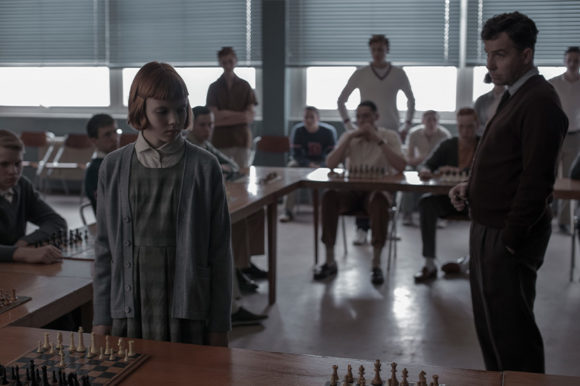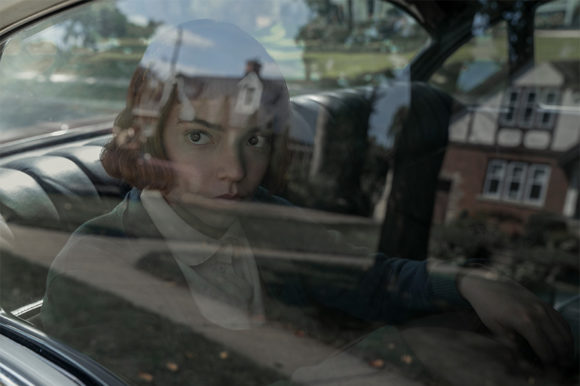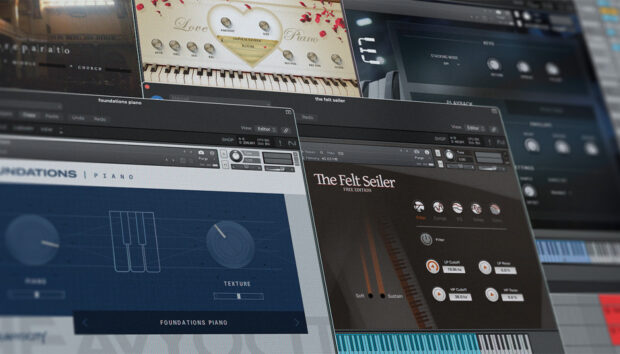Carlos Rafael Rivera is an EMMY Award winning composer who writes for film and television and also has an illustrious career in education. His long-time directing friend (and former student) Scott Frank cemented their partnership on the movie A Walk Among the Tombstones and Netflix Western drama Godless. Their most recent TV project, The Queen’s Gambit, has taken the world by storm and blossomed from a Netflix oddity to smash-hit show, with fans trying to explain its appeal despite the inaccessible subject matter. This is a show about self control and the nature of addiction, grounded in a chess prodigy’s journey.
Check out the video below to hear Carlos deconstruct the series’s sound palette, then read on for the full details – we’ll dive into the score’s COVID-era production process and find out exactly how he used NOIRE, ALICIA’S KEYS, and other KONTAKT libraries to bring the acclaimed soundtrack to life.
Hey there Carlos. So, how do you score chess?
That was my first thought when I got the job! How do you make anyone care, just on the premise alone? What kind of pitch meeting is that? I still can’t believe that director Scott Frank got approved to make it. When Scott talks about the show he sees it as an examination of the cost of genius, but for me I was always thinking about how this story can work tonally. Directors and producers love to speak in terms of tone and character so your job as a composer is to interpret those outlines, although the direction can be very unclear at the beginning of the process.
Can you explain why the piano features so heavily?
When I spoke to Scott about his concept, he originally wanted a completely piano-based score. I actually began to write the piano parts as if it were a choir, with separate elements representing ‘voices’. We spent a lot of time assembling episode one which has a huge amount of solo piano work. The first rough cut was almost 2 hours long with the music well spaced out, but as it was edited down, the music became squashed up and it started becoming way too dense. At that stage we knew that solo piano wasn’t going to cut it alone, so that’s when the sonic palette expanded. I think the turning point was early on in the process when I wrote the music for the match with Benny and I finally understood that I had to score contextually, instead of thematically.
Which pianos did you use?
Radiohead’s Motion Picture Soundtrack is one of my favourite songs and half the sound of that track is just the mechanical noises of the harmonium. The haptic feel of that record is something I really latched on to. I had also been obsessed with the piano effects used for the Phantom Thread soundtrack by Jonny Greenwood, so when I saw the Particles Engine in Native Instruments’ Noire I knew that was something I had to try in my own studio. The thing is, that piano is really warm and I needed something to brighten up the tone without artificially using an EQ. I already knew Alicia’s Keys really well as I’d used it on scores in the past. Mixing these two pianos together is where the magic happens. There’s so much to learn from sample libraries; these developers spend so much time and care to create a library so it’s worth exploring. If you go down the rabbit hole you will find some really special stuff.
What about the rest of the instrumentation?
I’ve had emails from people asking about the pianos and percussion, assuming that I’m using a shaker or something. Truth is, most of those percussive beds are from Noire. I chose the TONAL MALLET setting and set the Particles Engine MODE to AROUND AN OCTAVE. Other libraries are in there too, such as Kinetic Metal and some sequences from Action Strings. There are also some great patches from Spitfire Audio that were sprinkled in. The orchestrator was Jeremy Levy and he really had to work hard because I used quite a lot of these mixed patches and was handing him over some complicated cues.
Do you have any tips for arrangement?
I’ve seen a lot of composer videos where they’re utilising templates and I wish I could use that method, but my mind just doesn’t work like that. So instead I create a bunch of channels with different piano settings and copy/paste the MIDI data between them. It’s not very elegant, but thankfully I don’t find Kontakt very resource heavy so that’s the easiest way for me to work, with lots of different tempi and instrument settings on many tracks. This method also means that I get lots of control over automation for each part, which I always draw in manually.
Are you adding any effects?
It’s been quite a process actually: For my older scores I used lots of effects, both on individual channels and the master bus. For my more recent work I’ve actually removed everything on most tracks except EQ and reverb, and the master bus has almost nothing on it. I’ve learnt a lot about reverb EQ to keep things sounding clean so I tend to cut the mid-range from 200Hz to 1kHz in Logic’s Space Designer.

How did COVID-19 impact the production process?
As the pandemic became more serious we were actually worried that we wouldn’t be able to have any live recording sessions. So we had to bring the quality of the mock ups from 75% to 95% in a very short time. I actually reached out to some brilliant composers to help me, so huge thanks go to David Stal and Asuka Ito. Without their assistance on the mock ups, I wouldn’t have been able to make things sound half as good. It’s common for composers to get help and there’s lots to be learned from one another.
So collaboration is the key?
Definitely. Having the same DAW is the most important thing to keep things streamlined; we’re all working in Logic. Usually I have control of the final edit so if David is using a library that I don’t have, I’ll take the MIDI and rework it. This means that each cue grows and evolves as the MIDI is bounced back and forth between us. We don’t have cloned systems so it actually leads to a lot more work, especially when it comes to the deliverables. For example, we were getting to the final mix stage and Asuka had sent her stems played on the Una Corda but I knew something sounded different and couldn’t work out what it was. When we finally figured out it was just one little setting, we had to go back and redo about 20 cues.
How did you handle the recording sessions?
Actually I’ve never physically conducted a live orchestra for any of my work, I’ve always just worked remotely. This time around we used Source Connect so that we could just log in and hear the audio as the performers were playing. I’ve worked with the Budapest Art Orchestra several times but this is the first time that everybody involved in the scoring process has dialled in from different cities. It was actually a pretty smooth process.

Did you expect the soundtrack to get so much attention?
The fact that it was even released at all is a miracle and I’ve been blown away by the reaction. When I did the score for Godless, Netflix was just starting out making original content and I just don’t think they had the awareness. So when they finally agreed to release a soundtrack album, it was the happiest moment of my life. I know there’s no physical product but I don’t care, the fact that it came out at all means the world to me. So these soundtrack releases aren’t really for the profile, they’re personal to me. I can see that right now there’s lots of interest in me as a composer, but I’m also aware that in a few months nobody will care. I’ve seen it happen. So to have those scores out in the world means everything.
What’s the secret handshake I need to learn to bag a Netflix show?
I was lucky enough to get this opportunity because I was Scott Frank’s guitar teacher but that was 17 years ago so it’s not the best example. Nevertheless, I would recommend teaching as you’ll meet loads of like-minded people. You have to show up to networking events and things like that, but it’s the work that’ll really speak for you, even though the opportunities often come from left-field. The truth is that I wouldn’t even be on any social media if it wasn’t for finding work. I’m a creative at heart and people like us are happy to spend hours and hours alone in front of a computer screen… we do it because we love it!
Carlos’s score for The Queen’s Gambit is available now on major streaming platforms. You can stay up to date with his latest projects at carlosrafaelrivera.com.



















